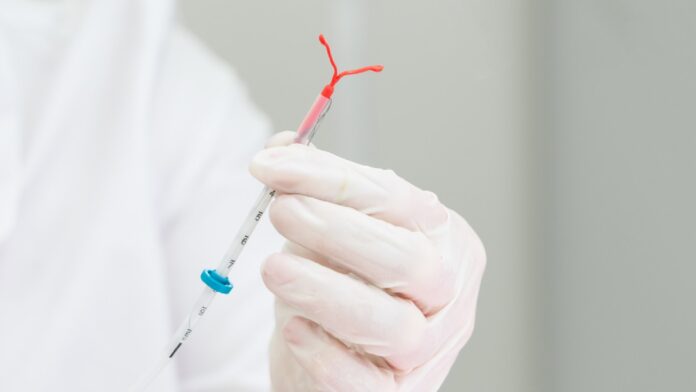When it comes to contraceptive options, the intrauterine device (IUD) is considered to be an effective choice for many women. It is a device that is inserted into the uterus so that unplanned pregnancies can be prevented. If you use an IUD, you will have to remove it at some point of time. You may be ready to conceive, or the device may be reaching its expiration date. But the thought of IUD removal can make anyone nervous. You wonder if it will be painful to get IUD removed or not. Read on to know what to expect when you get IUD removed.
What is an intrauterine device?
An IUD is a small, T-shaped device made of flexible plastic or copper that is inserted into the uterus to prevent pregnancy, says obstetrician and gynaecologist Dr Komal Bhadu. There are two types of IUD:
Copper IUDs
Made of copper and plastic, they don’t have hormones, but are still effective, as copper can kill sperm.
Hormonal IUDs
They have a hormone called progestin levonorgestrel, which thickens your cervical mucus and makes the lining around your uterus thinner. This helps in preventing pregnancy.

An IUD offers long-term contraception. Hormonal IUDs typically last between 3 and 7 years, while copper IUDs can provide protection for up to 10 years. Unlike birth control pills or other contraceptives, once inserted, it requires minimal maintenance, providing hassle-free protection against unplanned pregnancies.
How is IUD inserted?
Insertion of an IUD is typically performed by a healthcare professional in a clinic or doctor’s office. The cervix is gently dilated, and the device is placed into the uterus using a special inserter. The procedure is relatively quick and usually causes minimal discomfort, says the expert.
How to remove IUD?
IUD removal may be necessary due to reasons such as:
- The desire to conceive
- Experiencing side effects like spotting between periods or heavier menstrual bleeding
- IUD reaching its expiration date.
Once you decide to get it removed, schedule an appointment with a healthcare provider. During this appointment, discuss any symptoms or concerns you might have experienced while using the IUD. The entire removal process is usually swift, often taking just a few minutes.
When it is time for the removal, the healthcare provider will ask you to lie down on an exam table. A speculum will then be gently inserted into the vagina to visualise the cervix clearly. The healthcare provider will locate the IUD strings protruding through the cervical opening. Using a pair of sterile forceps, they will carefully grasp the strings and gently pull the IUD out of the uterus.
When the IUD gets extracted, you might notice mild cramping, but its removal does not usually hurt, according to a research published in StatPearls in 2023.
Is it okay to remove an IUD yourself?
Although some women may consider self-removal of an IUD due to convenience or a desire to avoid a medical appointment, it is not recommended due to the risks involved. Self-removal can potentially lead to complications such as incomplete removal, where part of the IUD remains in the uterus, causing pain and increasing the risk of infection, says Dr Bhadu.

There is also a risk of causing injury to the cervix or uterus if the IUD is not removed correctly. Also, if the IUD strings are not visible or easily reachable, attempting to remove it yourself can be challenging and dangerous. Professional removal ensures that any complications, such as embedded or broken IUDs, can be handled safely and effectively.
After IUD removal, make sure to discuss future contraceptive options with your doctor if pregnancy prevention is still desired. Also, monitor for any unusual symptoms or changes in menstrual patterns.
The post IUD removal: What to expect and is it painful? appeared first on Healthshots.

